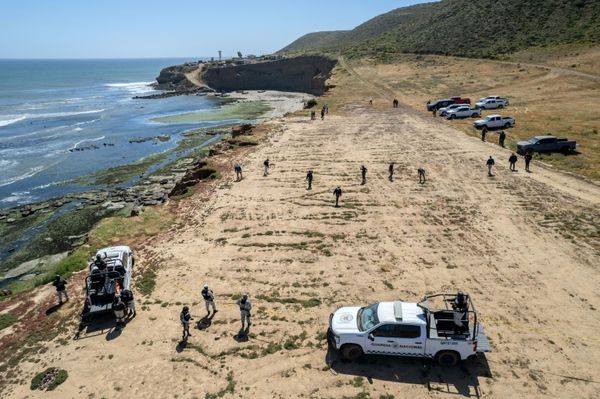
Today’s dinosaurs in Bedfordshire are digging up the seabed that their flesh-and-blood forebears paddled over a hundred million years ago. The metal arms of liberating machine bodies have brought up the sands of prehistoric beaches to flow free for the first time, after aeons of compression. The loosened sands have settled – for now – in two great conical mounds looking like orange tumuli, where living creatures once more make an impression. A trail of rabbit footprints scrabbles all the way up to the top of one. Bunny king of the sandcastle!
In this shapeshifting part of the quarry, nothing is fixed, not even the flat ground under our feet. The scatter of ironstone fragments, looking like bits of broken tiles, and biscuit-coloured knobbly stones that we might kick without thinking, are remnants of a mid-Victorian gold rush, when an army of picks and shovels scalped the earth in a thin band stretching between Buckinghamshire and the Norfolk border.
Those miners were surface-excavating for the mineral-rich layer of phosphatic sediment that would fertilise a nation’s crops. The lumpy nodules resembled fossilised dino dung, hence they were mistakenly called coprolites by the men who dug them up.
Twenty-first-century earth movers with steel jaws do more than lift off the top five metres. They sink into deep time, cracking open layers of long-crushed strata to a depth of 20 metres. Beyond the fence, past the mounds and out of our sight, creative intelligence is at work. The construction company Tarmac is being guided and encouraged by the RSPB, whose headquarters on a hill of sandstone sits across the road, to produce instant geology with heavy machinery.
In the working part of the quarry, they are carving out ravines and dry river valleys, raising little drumlins, shaping creases and folds, sheltering hollows and exposed faces that will, eventually, populate denuded landscapes. In parts of the quarry worked out decades ago, nourishing breezes have feathered the slopes and grooves with heather, lichens and mosses – the earliest makings of a habitat on a moonscape. The bare land I stand on may be dug out too, but what comes afterwards promises to be a miracle of inspiration and vision.
• Country diary is on Twitter at @gdncountrydiary







